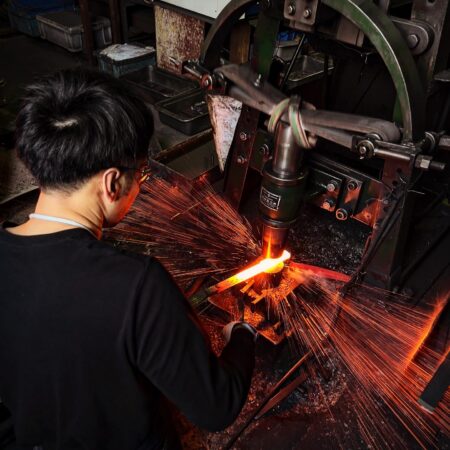合羽橋道具街 (Kappabashi Tool Street), located in Tokyo, Japan, is renowned for its extensive range of kitchenware and restaurant supplies. Here’s a brief history of this unique district:
Early 20th Century Origins:
Kappabashi’s history is rooted in the aftermath of the Great Kanto Earthquake in 1923. The district initially emerged as a hub for hardware and construction materials, crucial for Tokyo’s rebuilding efforts. This period marked the foundation of Kappabashi as a commercial district, albeit with a different focus than it has today.
Shift to Kitchenware and Restaurant Supplies:
As Tokyo rebuilt and modernized, the demand for restaurant supplies grew. Store owners in Kappabashi recognized this shift and gradually started specializing in kitchenware and restaurant-related goods. By the mid-20th century, Kappabashi was well-established as a center for culinary tools and equipment.
Cultural and Economic Significance:
The growth of Kappabashi mirrored the expansion of Tokyo’s food service industry. It became not just a commercial district but also a cultural icon, representing the heart of Japan’s culinary tradition. The area’s concentration of over 170 stores offered everything required for restaurant operations, making it a one-stop destination for industry professionals.
Diverse Range of Products:
Kappabashi’s allure lies in its vast array of products. From high-quality Japanese knives and handcrafted tableware to synthetic food replicas and restaurant furniture, the district caters to a wide range of culinary needs. These products not only serve practical purposes but also reflect the artistry and craftsmanship of Japanese culture.
Evolution and Modern Day Appeal:
Over the years, Kappabashi has adapted to changing trends and customer needs. While maintaining its traditional roots, the district has also embraced modern culinary tools and technologies. Today, it’s a popular spot not just for local chefs and restaurateurs but also for international visitors, offering a unique glimpse into Japanese culinary culture.
Kappabashi’s Role in Tokyo’s Culinary Scene:
Kappabashi’s importance extends beyond commerce. It’s a symbol of Tokyo’s culinary identity, showcasing the city’s commitment to quality and tradition in food preparation. The district also plays a vital role in supporting the city’s vast array of dining establishments, from small family-run eateries to high-end restaurants.
Tourism and Global Recognition:
In recent years, Kappabashi has gained international fame, attracting tourists and culinary enthusiasts from around the world. Its unique blend of traditional and modern kitchenware, alongside cultural artifacts like the plastic food models, has made it a distinctive tourist destination.
Challenges and Future Outlook:
Despite its success, Kappabashi faces challenges like any other commercial district. The rise of online shopping and changes in consumer behavior pose questions about its future. Nevertheless, the district’s deep-rooted history, cultural significance, and commitment to quality and craftsmanship ensure its ongoing relevance in Japan’s culinary landscape.
In summary, Kappabashi Tool Street is more than a shopping area; it’s a living museum of Japanese culinary history and a testament to the enduring appeal of traditional craftsmanship blended with modern innovation.






